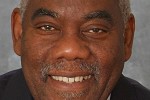By Dr Selwyn Cudjoe
August 31, 2020
 It is gratifying that we are looking anew at many of the institutional arrangements and practices that we have accepted blithely over the years.
It is gratifying that we are looking anew at many of the institutional arrangements and practices that we have accepted blithely over the years.
Recent articles by Reginald Dumas and Marina Salandy-Brown, the SEA discussion by The UWI scholars, and Theodore Lewis’s brilliant article on the subject have been instructive. Today’s discussion, “A Time for Healing”, sponsored by The UWI Faculty of Law in collaboration with the Catholic Commission on Social Justice, promises to be an exciting affair.
In 2011, I participated in a conference on multiculturalism that was sponsored by GOPIO T&T in Chaguanas, in which I spoke about the People’s Partnership’s (PP) misguided policy that strove to introduce multiculturalism as T&T’s national cultural policy (see “Multiculturalism and Its Challenges in Trinidad and Tobago”, trinicenter.com, March 9, 2011).
Winston Peters, the PP’s minister of arts and multiculturalism, outlined the rationale for this project on October 13, 2010, at a conference that was held under the auspices of his ministry and The UWI. He declared that “a large portion of the citizenry feels itself alienated from sharing in the development of the nation”. The PP’s approach did not seek to foster our Trinbagonianness.
In November 2010, Kamla Persad-Bissessar expanded this concept. In a conversation with Jason Edward Kaufman, a foreign reporter she had invited to the 2010 Divali celebrations, she expressed her desire to see “the emergence of a new national mind, based on the values of respect and understanding”. She claimed that while the PNM “did not pay much attention to the Hindu population… her government would”.
Anand Ramlogan, then-attorney general, claimed: “People think of Trinidad as a predominantly African country. We want to rectify this misperception.” The PP wished to place greater emphasis on the role of Hinduism in T&T’s development. In speaking about the PP’s policy, I noted that when Eric Williams spoke about our allegiance to what he called “Mother Trinidad and Tobago”, he wanted us to place less importance on our particularities and cultivate a warmer embrace for the larger entity called T&T.
This problem was not unique to T&T. Many newly formed independent states, such as India and Ghana, and older states such as Canada and Australia, faced similar problems of bringing their various nationalities and ethnicities together.
While Canada and Australia patted themselves on the back for the absence of religious and/or tribal problems, Trinidad provided a living laboratory experience of how a multicultural society functioned.
In 1866, WH Gamble, a Trinidadian who had studied at Oxford University, described Trinidad’s multicultural mix: “Many distinct peoples go to make up the population of Trinidad. There are men [and women] from all quarters of the globe, and with but little exaggeration, it may be said that, in Trinidad, all the languages of the earth are spoken.” (Trinidad: Historical and Descriptive)
Gamble also identified the origins of the African and Indian groups who lived in Trinidad, the many languages they spoke, and their diverse cultural practices.
The presence of these various cultural and linguistic frames did not necessarily guarantee that we automatically accepted and appreciated our differences, especially since many of these groups lived in their various enclaves. I emphasised: “Any society that wishes to live harmoniously together must first accept all of its history, not a part of it. We must be prepared take a serious look at how the society was made, the contributions of each group to its construction, and what constitutes the essence of the nation.”
I added in a later article: “No Trinbagonian can pick and choose what parts of our history he or she will honour. We cannot say that the history of slavery belongs to the Africans alone or that the history of indentureship belongs to the Indians exclusively. These are aspects of interrelated historical moments that belong to all of us.” (December 11, 2018).
I suggested that our schools should acquaint our pupils with the cultural vocabularies of our various peoples. All our pupils should be conversant with the tenets of Islam, Hinduism, Christianity and a traditional African religion. A Trinbagonian cannot call herself educated if she does not know what the Ramleelas, Hosay, Gyap, Shango, Orisha and some of the major celebrations represent.
I urged that we stop thinking that all the initiatives of a previous government are bad. I commended Patrick Manning’s effort to improve race relations and argued: “Let us not take our racial harmony for granted.
Let us solidify our racial harmony and build on Manning’s Committee on Race Matters… Public conversations on race can go a long way to demonstrate to our publics that although we have varying interests and concerns, we can speak about them in a civil manner.”
I suggested that we develop a national cultural policy growing out of our historical experience that emphasises our commonalities rather than our differences. It should demand that the religions, cultures and histories of the various groups be a part of our high school curriculum, and to allocate considerable resources to the research and writing of our various cultures, village histories, the biographies of outstanding individuals and everyday people who do extraordinary things. We should establish a mandatory national service programme where young people between the ages of 18 and 20 devote a year to serving their fellow Trinbagonians.
Although our television stations are demanding that we “STOP THE HATE”, we cannot do so by fiat. We must re-educate our various publics and introduce formal and informal programmes to combat these hateful behaviours. Such an approach demands that governmental, civil society, religious and educational groups renew their commitment to the social contract.
As we enter the 59th year of our Independence, it is imperative that we explore new ways to understand one another and deepen our racial solidarity.
